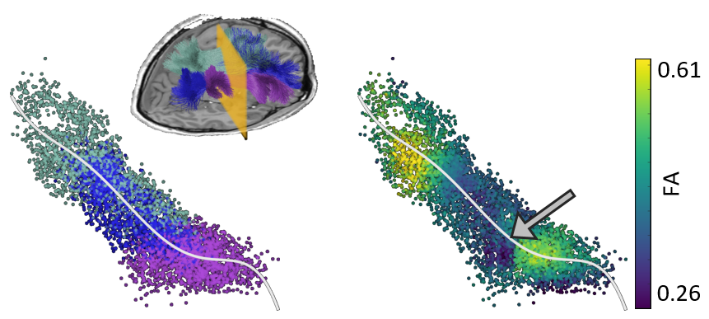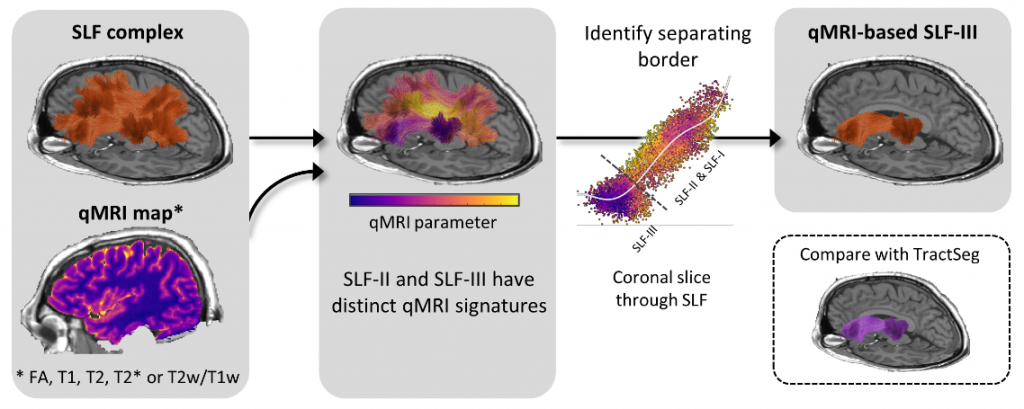Brain regions communicate with each other through special tracts, called white matter tracts. One major tract in the human brain is the superior longitudinal fasciculus (SLF), which has been linked to various disorders, such as ADHD. SLF connects the frontal and parietal brain regions and previous studies in monkeys have revealed that it consists of three separate sub-bundles: SLF-I, SLF-II and SLF-III. We show that SLF-III can be separated from the rest of the SLF. Using several types of quantitative MRI (qMRI) measurements, we found that in three independent datasets, SLF-II and SLF-III show consistently distinct signatures of qMRI parameters. We designed an algorithm that automatically identifies the separating border between these two sub-bundles, suggesting unique qMRI signatures of SLF-II and SLF-III. This shows that multi-modal MRI information is useful for delineating white matter tracts in vivo, getting us one step to a multi-modal atlas of human white matter.


